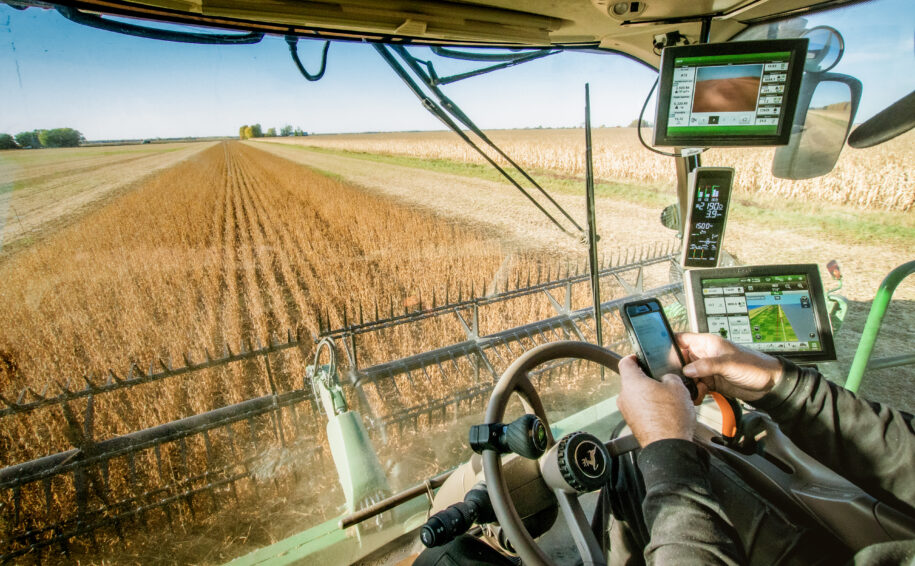How we evolved a simple application to a predictive analytics platform beyond the early stages of product development
Over the last 4+ years, we have been productizing agriculture system modeling. We started with a simple application that focused on a core problem for potato growers. Within the last few years, after several progressive iterations, we scaled our product to a platform, ForeSite™. This platform hosts several software products solving various problems in successfully growing multiple crops while connecting the agriculture value chain (growers, agriculture retailers, and crop protection companies) through the same data but different analytics and actionable insights.
While there were several learnings in our journey to date, we are sharing the key lessons learned in evolving and scaling the product beyond the early stages of product development.
Evolve product design and architecture in response to the business model(s)
Our initial business model was aimed at providing actionable insights at a fixed cost for a few fields, helping potato growers manage their farm operations and reduce yield loss. We created a product that made accurate, field-specific weather data available in real time from in-field sensors. It evaluated conducive conditions to suggest spray advisories up to 7 days in advance for managing Late Blight and Early Blight diseases that could negatively impact crop health and yield.
While the feasibility of the product was proven, the limitations of this business model became apparent when our customers started to ask for products that could help them manage more crops. We needed to develop a business model that would account for the work required to grow our product portfolio while maintaining a reasonable price point for our customers.
At this point we shifted to a per-acre, per-crop business model, still selling directly to the growers. The next iteration of the business model was inspired by reducing the customer acquisition costs, which led us to sell through a fixed cost or license cost to crop protection companies and agriculture retailers who onboarded growers on ForeSite™ to collaborate with.
With each business model iteration, major changes to product design and architecture followed. The key lesson we learned, and have been applying since is that the product must evolve in response to the needs of a new business model.
Deliver a unique value to each player in the value chain
This process of evolving the business model, followed by the product, was cemented into our design philosophy during the next phases of development. After exploring various avenues, we uncovered the need for data-driven collaboration among the various agriculture value chain players and their customers (growers) on a more real-time basis. The approach that helped in scaling our product to what it is today was delivering a unique value through our platform to each user group (growers, agricultural retailers, and crop protection companies). This enabled all user groups on ForeSite™ to focus on the value to them beyond a ‘reseller’ mindset, which is making a margin at selling products to their customers down the value chain.
Focus on evolving the customer journey through an existing habit rather than a completely new conscious action that the users will have to take
It takes time for the users to build trust with a product. Once the trust is established, the user is generally more open to exploring the product and the value it delivers. If the value resonates with the user at this time, there is a high probability of product adoption.
The more complex this initial conscious action is that the user has to take to establish the initial trust, the higher chance a user will drop off mid-way or not take these actions at all. Hence, product adoption will greatly suffer, or will take much longer, or both.
Linking this trust to an existing habit greatly reduces the initial friction for the user to explore the product, ultimately moving forward on the product journey to explore the additional and higher value offered by the product. In our case, this key habit is growers looking for weather analytics in their fields. Once users start to trust the weather analytics, they explore the advanced modeling solutions, an additional higher value. Going through the same cycle, once the trust is established with the modeling solution at a small scale, the user begins to incorporate them in their decision-making at scale.
Clearly understand the constraints
In adapting to the new business model(s) and evolving the product in response, it is extremely important to understand the constraints that are in play.
In the agriculture industry, these constraints go beyond the balancing act of releasing a product on time, building with high quality, and delivering within the allocated budget. The growing season in Canada lasts from about April to October, depending on where you live and which crops you grow. As a result, there is very little time to experiment. In such an environment, product evolution requires precision and diligence while working very closely with the end users before commercially releasing any product. Releasing fewer changes/products with high quality and predictability trumps releasing many changes/products with the mindset to see what sticks.
The greatest strength and challenge for a startup is adaptability. As we continue to adapt and evolve our business model(s), product, and our company to add value to the operations of our customers, we will share our learnings with the hope it helps you with your product journey. If you are interested in further discussing our learnings or in our business, please feel free to contact us and stay tuned for more posts.
